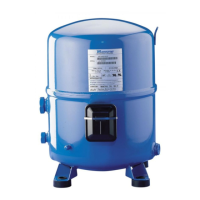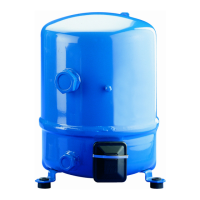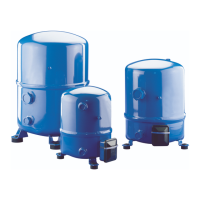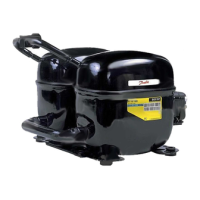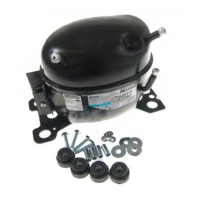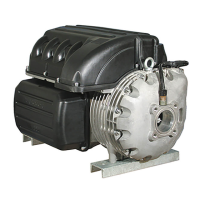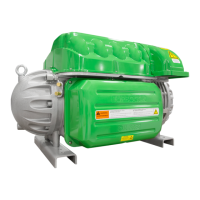Application guidelines
18 FRCC.PC.002.A4.22
System design recommendations
Oil charge and oil
separator
Filter driers
Suction pressure control
Suction line heat
exchanger
In most installations the initial compressor oil
charge will be sucient. In installations with line
runs exceeding 66 ft, or with many oil traps or an
oil separator, additional oil may be required. In
installations with the risk of slow oil return such
as in multiple evaporator or multiple condenser
installations, an oil separator is recommended.
Also refer to the section "Oil charge and oil level".
For new installations with NTZ compressors Dan-
foss recommends using the Danfoss DML 100%
molecular sieve, solid core lter drier. Molecular
sieve lter driers with loose beads from third
party suppliers shall be avoided.
For servicing of existing installations where acid
formation is present the Danfoss DCL solid core
lter driers containing activated alumina are
recommended.
The drier is to be oversized rather than under-
sized. When selecting a drier, always take into
account its capacity (water content capacity),
the system refrigerating capacity and the system
refrigerant charge.
An MOP-type expansion valve or suction pressure
regulator (i.e. Danfoss KVL) must be used to limit
suction pressure at a maximum of 58 psig relative
(23°F). Do not apply both of these devices in
combination with one another.
When compressors are mounted onto a rack for
a multi-evaporator system (i.e. supermarket) or
when evaporators operate at dierent tempera-
tures, use pressure regulators (Danfoss KVP)
without an MOP expansion valve.
A suction line heat exchanger is recommended
for low temperature applications, better perfor-
mance and eciency are expected. However
in hot location this may cause high suction gas
superheat which can result in too high discharge
temperature.
Low ambient temperature
operation
At low ambient temperatures, the condensing
temperature and condensing pressure in air
cooled condensors will decrease. This low pres-
sure may be insucient to supply enough liquid
refrigerant to the evaporator. As a result the evap-
orating temperature will decrease, leading to low
capacity and eventual poor oil return. At start-up,
the compressor will pull into vacuum and it will
be switched o by the low pressure protection.
Depending on how the low pressure switch and
delay timer are set, short cycling can occur. To
avoid these problems, several solutions are possi-
ble, based on reducing condenser capacity:
In air-cooled machines, cycling the fans with
a head pressure controller will ensure that the
fans remain o until the condensing pressure
has reached a satisfactory level. Variable speed
fans can also be used to control the condensing
pressure. In water-cooled units, the same can be
performed using a water regulator valve that is
also operated by head pressure, thereby ensuring
that the water valve does not open until the con-
densing pressure reaches a satisfactory level.
The minimum condensing pressure must be set
at the minimum saturated condensing tempera-
ture shown in the application envelopes.
Under very low ambient conditions, in which
testing has revealed that the above procedures
might not ensure satisfactory condensing and
suction pressures, the use of a head pressure
control valve is recommended. Note: This
solution requires extra refrigerant charge, which
can introduce other problems. A non-return
valve in the discharge line is recommended and
special care should be taken when designing the
discharge line.
When the compressor is located in a low ambient
temperature environment, increased refrigerant
migration will occur during shut down periods.
For such conditions an extra belt-type crankcase
heater is strongly recommended.
Note that with 100% suction gas cooled mo-
tors, Maneurop® compressors can be externally
insulated. Refer to section "Liquid refrigerant
migration & charge limits" for more details.
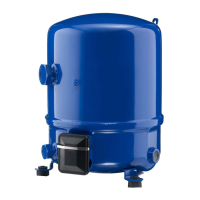
